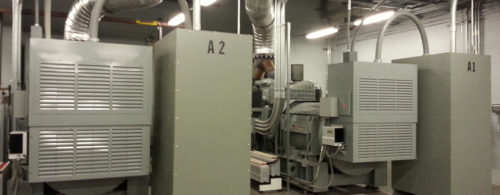GAS TECHNOLOGY: New thermal oxidizer designs
The goal is to reduce emissions of volatile organic compounds (VOCs) and hazardous air pollutants (HAPs). Examples of such exhaust stream sources are paint or solvent vapors, printing exhausts, petrochemicals, pharmaceuticals, and plastics manufacturing.
In the interest of workplace health and safety as well as compliance with emissions limitations, it is essential to efficiently collect vapors and mists from industrial processes and treat them using thermal oxidation. The goal is to reduce emissions of volatile organic compounds (VOCs) and hazardous air pollutants (HAPs). Examples of such exhaust stream sources are paint or solvent vapors, printing exhausts, petrochemicals, pharmaceuticals, and plastics manufacturing.
Simple Flares Can Still Work
The earliest and simplest systems were simply flares or burners, where the exhaust stream was directed through a combustion zone for a time sufficient to break down most complex hydrocarbon molecules. Where the exhaust stream itself is sufficient to support stable combustion, this may still be a practical approach.
But, if it is necessary to add natural gas or another fuel to support combustion, such a system may have unacceptably high operating costs. Increasingly, industry is choosing to use regenerative or recuperative thermal oxidizers, sometimes with catalytic process elements, which conserve energy and allow for more complete destruction of undesired emissions.
Recuperative Units Use Heat Exchangers
Recuperative thermal oxidizers use a stable flame from a natural gas burner to support combustion of the plant exhaust stream, then recover as much heat as possible from the process exhaust using a plate or tube heat exchanger. These systems are most practical for exhaust streams with a high proportion of VOCs, typically 20% or more. According to Keith Herbert, Vice President of Sales for Catalytic Combustion Corporation, a manufacturer of thermal oxidizers, the typical recuperative oxidizer allows 50-60% heat recovery. He adds, “If there is a need for very high destruction efficiency (say more than 99%), then a cost evaluation may show that a recuperative heat exchange is the most effective.”
Regenerative Systems in Spotlight
A large proportion of the systems being installed today are regenerative thermal oxidizers (RTOs). These pass the process exhaust through a ceramic heat sink where pollutants are destroyed by high-temperature oxidation, supported by a natural gas burner. The oxidation process heats the ceramic and the stream is alternated between two heat sink areas, which captures the exhaust heat and uses it to support the process.
Herbert indicates that RTOs typically provide 95% heat recovery. He adds, “The proportion of the combustion heat that needs to be provided by the supporting natural gas ranges from 65% to 95%, with outside ranges being from 10% to 100%.” Obviously much depends on the combustion characteristics and richness of the exhaust stream.
Interest in Increasing Efficiency
Another provider of a wide range of thermal oxidizer technologies is Anguil Environmental Systems. Anguil was a presenter at a recent Technology and Market Assessment Forum, sponsored by the Energy Solutions Center. According to Kevin Summ, Marketing Manager for Anguil, there is a growing interest in heat recovery, including secondary heat recovery from the exhaust stacks of all types of thermal oxidizers.
Summ points out, “Secondary heat recovery is even applied on the RTO, but because these are so efficient, the low stack temperatures don’t offer as much potential.” He explains that the RTO uses 95% of the heat generated during combustion to pre-heat incoming flow. “For example, at 95% thermal efficiency, the outlet temperature of an RTO may be only 70 degrees F higher than the inlet process temperature.”
Potential for Electric Generation
Summ indicates that secondary heat exchangers capture heat that can be used to generate hot air, water, steam and even electricity. He says, “On the horizon, heat-to-power systems are in development for reclaiming oxidizer stack heat and creating electricity.” Obviously this option is only practical where there is a significant volume of reclaimed heat.
He notes that one option that has been used sparingly involves taking hot oxidizer stack air directly back for use in production processes. This is sometimes referred to as Direct Heat Recovery. He cautions that direct heat recovery is generally avoided due to the risks of introducing products of incomplete combustion back into a plant environment or of oxidizer “oven dirt” contaminating the product. “But there are limited cases where this form of oxidizer stack heat recovery has been used effectively.”
Choosing the Right Solution
On the question of choosing between regenerative and recuperative thermal oxidizers, Summ stresses that every application for VOC/HAP abatement is unique. “Here are some of the criteria we use to determine the proper technology: Emission composition and concentration, required destruction rate efficiency, and operating costs versus capital cost restrictions.”
John Zink Co. offers an array of thermal oxidation and heat recovery systems that can safely handle a wide range of hazardous industrial waste gases and liquids. According to Charles Baukal, Director of the John Zink Institute, the company specializes in custom-engineered solutions for the hydrocarbon processing, chemical processing and ethanol industries. Baukal explains, “These systems remove odorous VOCs and CO and regulate emissions in ethanol dryer exhaust and other plant streams resulting in increased uptime, and fuel economy through total energy integration.”
John Zink Co. LLC’s TANGENT™ system is a breakthrough thermal oxidation technology that drastically reduces thermal NOx levels to near zero ppm while maintaining non-detectible CO levels. TANGENT technology can eliminate post-combustion NOx reduction systems and greatly reduces the plot space typically required for comparable NOx performance. Applications include ethanol plant dryer off-gases, sulfur plant tail gases, natural gas processing off-gases, direct fired air heaters and endothermic liquid and gaseous waste thermal oxidizers.
Get Help in Making the Choice
In selecting a thermal oxidizer, it is crucial to work with a consultant as well as a manufacturer for equipment selection and for performance guarantees. This process requires detailed characterization of the waste stream and consideration of possible future additions or process changes. The consultant also plays an important role in the permitting process, using information provided by both the operator and the provider of the thermal oxidizer. All manufacturers agree that choosing the right oxidizer is a critical step in achieving air emission compliance.
Do you have experience and expertise with the topics mentioned in this content? You should consider contributing to our CFE Media editorial team and getting the recognition you and your company deserve. Click here to start this process.



